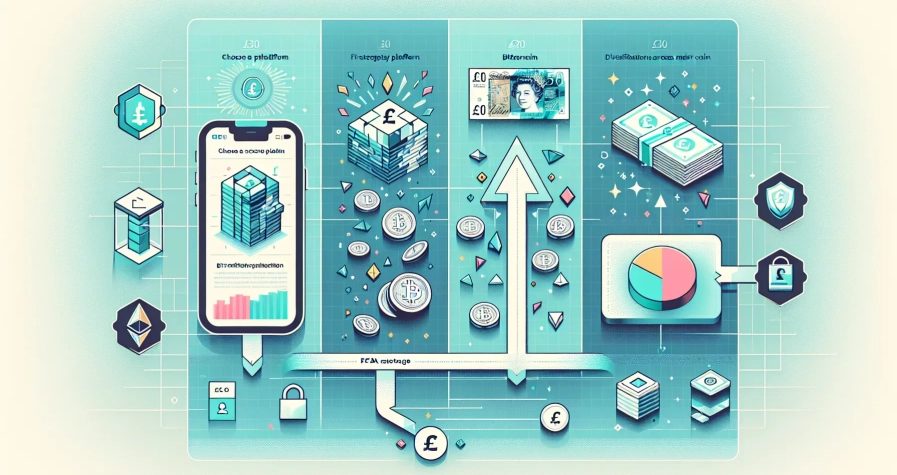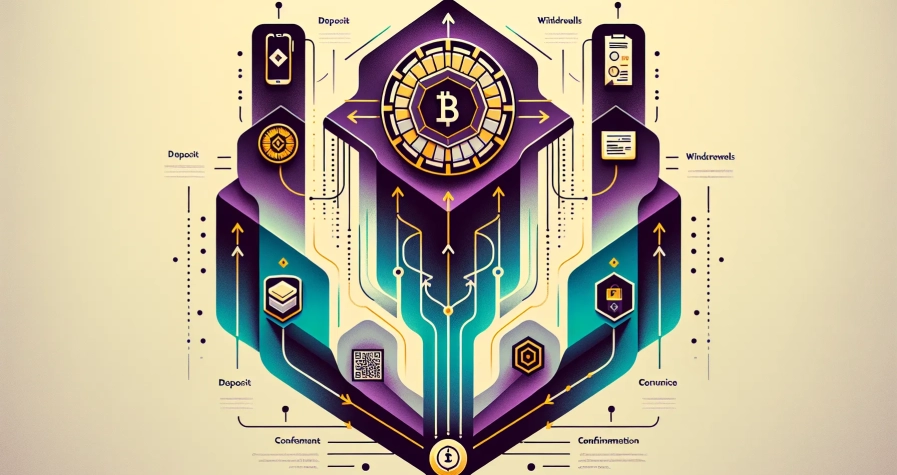You’ve probably heard the term NFT thrown around in tech circles and news headlines, but what exactly are these digital assets that have taken the world by storm? Non-Fungible Tokens represent a revolutionary way to prove ownership of digital content, from artwork and music to virtual real estate and collectibles.
Unlike traditional digital files that can be copied endlessly, NFTs create unique digital certificates that verify authenticity and ownership. Think of them as digital certificates of authenticity that live on blockchain networks, making each token completely unique and impossible to replicate.
Whether you’re curious about investing in digital art or simply want to understand this groundbreaking technology, grasping how NFTs function is essential in today’s digital landscape. We’ll break down the complex world of NFTs into simple, digestible concepts that’ll have you understanding this technology in no time.
What Are NFTs and Why Do They Matter?
NFTs represent unique digital tokens that exist on blockchain networks, primarily Ethereum. Each token contains specific metadata that makes it distinguishable from every other token, creating digital scarcity for items like artwork, music files, videos, and virtual properties.
The fundamental difference between NFTs and traditional digital assets lies in their blockchain verification system. When you own an NFT, the blockchain records your ownership permanently and transparently. This system prevents duplication and establishes authentic ownership rights for digital content that previously existed without clear proprietorship.
Core Components of NFT Technology
| Component | Function | Example |
|---|---|---|
| Smart Contract | Defines ownership rules | ERC-721 standard |
| Metadata | Stores asset information | Artist name, creation date |
| Token ID | Provides unique identifier | #4563 from collection |
| Blockchain Record | Maintains ownership history | Transaction timestamps |
Economic Value Creation
NFTs create value through artificial scarcity in the digital realm. Digital artists can monetise their creations directly without traditional intermediaries like galleries or auction houses. Collectors gain verifiable proof of ownership for digital assets, enabling them to trade, display, or hold these items as investments.
Real-World Applications Beyond Art
Gaming platforms integrate NFTs as unique in-game items such as rare weapons, character skins, or virtual land parcels. Sports organisations create digital trading cards featuring memorable moments or player statistics. Musicians release exclusive albums or concert footage as limited-edition tokens for their fan communities.
Market Impact and Cultural Significance
The NFT marketplace reached £15.7 billion in trading volume during 2021, demonstrating significant investor interest. Major auction houses like Christie’s and Sotheby’s now feature NFT sales alongside traditional art pieces. This adoption signals a shift towards digital ownership concepts that extend beyond physical possessions into virtual environments.
The Technology Behind NFTs: Blockchain Basics
NFTs operate on blockchain technology, which serves as a secure, distributed digital ledger that maintains permanent records across multiple computers. This decentralised system creates the foundation for digital ownership verification without requiring traditional intermediaries.
Understanding Digital Ownership
Digital ownership through NFTs differs fundamentally from conventional file possession. When you purchase an NFT, you acquire a unique digital certificate recorded on the blockchain that proves your ownership rights to a specific digital asset. This certificate contains immutable proof that distinguishes your token from any copies or similar items.
The blockchain records every transaction involving your NFT, creating a transparent ownership history that anyone can verify. Your ownership exists independently of the actual digital file, which might be stored on external servers or decentralised storage systems like IPFS.
Key aspects of NFT digital ownership include:
- Unique token identifiers that differentiate each NFT from others
- Transparent transaction history showing previous owners and sale prices
- Verifiable authenticity through blockchain cryptographic signatures
- Transferable ownership rights that enable marketplace trading
Unlike traditional digital files that you can copy infinitely, NFTs create artificial scarcity through blockchain verification. This scarcity mechanism allows digital creators to monetise their work whilst providing collectors with authentic ownership proof.
Smart Contracts Explained
Smart contracts serve as the programmable foundation that governs how your NFTs function and transfer ownership. These self-executing pieces of code operate automatically on the blockchain, eliminating the need for manual intervention in transactions.
When you interact with NFTs, smart contracts handle the technical processes behind minting, buying, selling and transferring tokens. They contain pre-programmed rules that determine ownership rights, royalty payments to creators and marketplace interactions.
Essential smart contract functions include:
- Automatic royalty distribution to original creators during secondary sales
- Ownership verification through cryptographic proof mechanisms
- Transfer protocols that update blockchain records when ownership changes
- Metadata management linking tokens to their associated digital assets
Ethereum’s ERC-721 standard defines the basic framework for individual NFTs, whilst ERC-1155 enables batch transactions and multiple token types within single contracts. These standards ensure your NFTs remain compatible across different platforms and marketplaces.
Smart contracts also enable advanced features like time-locked releases, collaborative ownership arrangements and dynamic pricing mechanisms based on market conditions.
How NFT Creation Works
Creating your own NFT transforms your digital artwork or media into a unique blockchain-based token through a systematic process. You’ll follow specific steps to mint your digital asset and establish verifiable ownership on the blockchain.
The Minting Process
Minting converts your digital file into an NFT by recording it as a unique token on the blockchain. You start by connecting your digital wallet to an NFT platform such as OpenSea, Rarible, or Binance-based marketplaces.
The process requires you to upload your digital asset—whether artwork, video, music, or other media—to the chosen platform. Once uploaded, you initiate the minting process, which creates the blockchain token containing your asset’s metadata including ownership details, token ID, and transfer rules.
Smart contracts automatically govern your NFT’s features during creation. These contracts handle royalty distributions and transfer permissions without manual intervention. The platform records all metadata permanently on the blockchain, making your asset verifiable and tradeable immediately after minting completes.
Minting Steps:
- Connect your digital wallet to the NFT platform
- Upload the digital asset you want to tokenise
- Initiate minting to create the blockchain token
- Configure smart contract features like royalties
- Complete the process to list or store your NFT
Choosing the Right Blockchain Platform
Different blockchain networks offer varying benefits for NFT creation. Ethereum remains the most popular choice due to its robust smart contract capabilities, though it carries higher gas fees during network congestion.
Binance Smart Chain provides lower transaction costs and faster processing times, making it cost-effective for creators working with multiple pieces. Flow blockchain specialises in NFTs and digital collectibles, offering scalable infrastructure designed specifically for these assets.
Tezos operates on a proof-of-stake consensus mechanism, appealing to environmentally conscious creators seeking sustainable minting options. Each platform maintains different marketplace compatibility and community support levels.
| Platform | Key Features | Best For |
|---|---|---|
| Ethereum | Robust smart contracts, largest ecosystem | Established artists, high-value pieces |
| Binance Smart Chain | Lower fees, faster transactions | Volume creators, cost-conscious minting |
| Flow | NFT-specific design, scalable | Gaming assets, collectibles |
| Tezos | Eco-friendly, proof-of-stake | Sustainable projects, environmental focus |
Consider transaction fees, security measures, marketplace compatibility, and interoperability when selecting your blockchain platform. Your choice affects both creation costs and potential buyer accessibility across different NFT marketplaces.
Buying and Selling NFTs
Trading NFTs requires a crypto wallet funded with cryptocurrency and access to specialised blockchain marketplaces. You’ll transfer digital ownership through permanent blockchain transactions that record each purchase and sale.
Popular NFT Marketplaces
OpenSea dominates as the largest multi-collection marketplace, hosting millions of NFTs across art, gaming, and collectibles categories. You can browse extensive collections, participate in auctions, and access both established and emerging artists’ work.
Rarible operates as a community-governed platform where users influence marketplace decisions through voting mechanisms. This decentralised approach allows creators to mint NFTs directly whilst maintaining lower barriers to entry compared to curated platforms.
Binance NFT Marketplace connects seamlessly with the Binance exchange ecosystem, offering reduced trading fees for Binance Coin holders. You benefit from integrated wallet functionality and streamlined cryptocurrency conversion options.
Foundation and SuperRare specialise in high-quality digital art curation, requiring artist applications and maintaining exclusive creator standards. These platforms typically command higher prices due to their selective approach and established collector communities.
| Marketplace | Primary Focus | Key Features |
|---|---|---|
| OpenSea | Multi-collection | Largest selection, auction system |
| Rarible | Community-driven | Decentralised governance, direct minting |
| Binance NFT | Exchange integration | Low fees, wallet integration |
| Foundation | Curated art | Exclusive creators, premium pricing |
Understanding Gas Fees and Transaction Costs
Gas fees represent the computational costs required to process NFT transactions on blockchain networks. These fees compensate miners and validators for maintaining network security and processing your transactions.
Ethereum gas fees fluctuate significantly based on network congestion, ranging from £10 to £50 per transaction during peak periods. Complex transactions like minting or bidding typically cost more than simple transfers due to increased computational requirements.
Alternative blockchain costs vary considerably across platforms. Binance Smart Chain charges approximately £0.10 per transaction, whilst Polygon offers near-zero fees for most NFT operations. Flow and Tezos maintain moderate fee structures between £0.50 and £2.00 per transaction.
Fee calculation factors include network demand, transaction complexity, and processing speed preferences. You can reduce costs by timing transactions during low-activity periods or choosing faster, cheaper blockchain alternatives for your NFT activities.
Transaction types carry different cost implications. Minting new NFTs typically costs £20-£100 on Ethereum, buying existing NFTs ranges from £5-£30, and simple transfers cost £3-£15 depending on network conditions and chosen gas prices.
Storing and Managing Your NFTs
You store NFTs in digital wallets—software or hardware tools that secure your private keys and control access to your blockchain assets. Your choice of wallet determines both the security and convenience of managing your digital collectibles.
Digital Wallets for Beginners
Beginners benefit from wallets with intuitive interfaces and comprehensive security features. You’ll find hardware wallets (cold wallets) provide maximum security by storing your NFTs offline away from internet threats, making them ideal for valuable collections despite reduced convenience for frequent trading. Software wallets (hot wallets) offer greater accessibility through constant internet connectivity but expose you to higher risks from hackers and scammers.
Popular beginner-friendly options include:
- MetaMask – Browser extension supporting multiple blockchains
- Trust Wallet – Mobile application with built-in DApp browser
- Ledger Nano X – Hardware device supporting over 1,800 cryptocurrencies
- Coinbase Wallet – User-friendly interface with educational resources
Essential wallet features include clear backup processes, multi-signature authentication support, easy NFT viewing capabilities, and straightforward transfer functions that simplify your digital asset management experience.
Security Best Practices
Protecting your NFT investments requires implementing multiple security layers and maintaining vigilant digital habits. You reduce theft risks by using hardware wallets for cold storage whenever possible, particularly for high-value collections worth protecting from online threats.
Critical security measures include:
| Security Practice | Implementation | Benefit |
|---|---|---|
| Strong passwords | Create unique 12+ character combinations | Prevents unauthorised access |
| Two-factor authentication | Enable on all wallet accounts | Adds verification layer |
| Seed phrase backup | Store offline in secure locations | Enables wallet recovery |
| Regular updates | Keep firmware/software current | Patches security vulnerabilities |
| Private network usage | Avoid public Wi-Fi for transactions | Prevents interception attacks |
You must securely back up your wallet seed phrases and never share private keys with anyone, as these provide complete control over your digital assets. Staying informed about current scams whilst avoiding suspicious links and unverified offers protects you from common NFT fraud schemes. Consider diversifying storage across multiple wallets and exploring insurance options for particularly valuable NFT collections to further safeguard your investments.
Common Use Cases for NFTs
NFTs serve diverse functions across multiple industries, establishing new models for digital ownership and creator monetisation. These applications demonstrate how blockchain technology transforms traditional concepts of ownership into verifiable digital assets.
Art and Collectibles
Digital art represents the most prominent NFT application, enabling artists to tokenise their creations whilst establishing verifiable ownership through blockchain verification. You can purchase original digital artwork that includes cryptographic proof of authenticity, eliminating concerns about unauthorised copies or fraudulent claims.
Notable art sales demonstrate the market’s significant value potential. Beeple’s “Everydays: The First 5000 Days” achieved a record-breaking sale of over £50 million at Christie’s auction house, whilst individual CryptoPunks pieces have sold for millions of pounds. These early NFT collections now feature in major museums and galleries worldwide.
Digital collectibles extend beyond traditional artwork to include profile pictures, animated graphics, and limited-edition series. Many collectors use these NFTs as social media avatars, displaying ownership status within digital communities. The collectibles market operates similarly to physical trading cards, with rarity and historical significance driving value appreciation.
Gaming and Virtual Assets
Gaming NFTs revolutionise player ownership by representing in-game items, characters, and virtual properties as blockchain-verified assets. You maintain ownership of these digital items independently of game developers’ servers, ensuring access even if the original game discontinues operations.
Virtual worlds like Decentraland and The Sandbox utilise NFTs for avatars, virtual land parcels, and architectural structures. Players can purchase virtual property, develop it with custom buildings, and monetise their creations through rental agreements or direct sales. These metaverse economies create new revenue streams for players and developers alike.
Trading mechanics allow you to exchange rare weapons, character skins, or special abilities across different gaming platforms. This interoperability enables valuable items to retain worth beyond individual game ecosystems, establishing true digital asset ownership comparable to physical collectibles.
Utility and Membership Tokens
Utility NFTs provide access to exclusive services, events, or membership benefits rather than focusing solely on aesthetic value. You can purchase NFTs that function as digital tickets for concerts, conferences, or sporting events, with blockchain verification preventing counterfeiting and enabling secure resale markets.
Educational credentials represent another utility application, where institutions issue NFTs as tamper-proof certificates for degrees, professional qualifications, or completed courses. These tokens eliminate verification delays and reduce administrative costs whilst maintaining permanent accessibility for employers or regulatory bodies.
Membership tokens grant access to private communities, exclusive content, or special privileges within online platforms. Many businesses use NFTs as loyalty programme tokens, offering holders discounts, early access to products, or voting rights in community decisions. This model creates sustainable engagement between brands and customers through blockchain-verified membership systems.
Risks and Considerations
Market volatility poses significant challenges for NFT investors, with prices experiencing extreme fluctuations driven largely by speculation rather than intrinsic value. NFT prices can rise rapidly during hype cycles before crashing dramatically, creating bubble-like conditions that mirror historical speculative markets. You’ll encounter price swings that can result in substantial financial losses within short timeframes, particularly during market corrections.
Fraud and scams represent major threats in the unregulated NFT space, where fake sellers and counterfeit tokens proliferate across various platforms. Fraudulent sellers create copies of popular NFTs and sell them as authentic originals, whilst phishing attacks target your wallet credentials through deceptive websites and social media campaigns. Sleepminting attacks allow malicious actors to mint NFTs directly into your wallet without permission, making it appear as though famous artists created tokens they never actually made.
Smart contract vulnerabilities create technical risks that can result in permanent asset loss or theft. These self-executing contracts may contain coding errors or security flaws that hackers exploit to drain funds or manipulate ownership records. You’re exposed to risks from poorly audited contracts, particularly on newer platforms with less established security protocols, where millions of pounds worth of NFTs have been stolen through contract exploits.
Legal uncertainty surrounds NFT ownership rights, as no comprehensive global regulatory framework currently governs these digital assets. Purchasing an NFT typically grants you ownership of the token itself rather than copyright or exclusive rights to the underlying digital content. Your legal protections remain limited, with unclear intellectual property implications and potential disputes over commercial usage rights for the associated digital files.
Digital decay risks threaten the long-term value and accessibility of your NFT investments, as most tokens reference files stored on external servers rather than directly on the blockchain. When hosting websites disappear or file formats become obsolete through technological advancement, you may lose access to the digital content your NFT represents. This “bit rot” phenomenon can render valuable NFTs effectively worthless if the linked digital assets become permanently inaccessible.
| Risk Category | Potential Impact | Mitigation Strategy |
|---|---|---|
| Market Volatility | 50-90% price drops | Invest only disposable income |
| Fraud/Scams | Total asset loss | Verify seller authenticity |
| Smart Contract Bugs | Permanent token loss | Use established platforms |
| Legal Uncertainty | Limited ownership rights | Understand terms before purchase |
| Digital Decay | Content inaccessibility | Choose IPFS-stored assets |
Platform dependency adds another layer of risk, as your ability to trade or display NFTs relies entirely on marketplace availability and blockchain network functionality. Changes to platform policies, service shutdowns, or network failures can impact your ability to access or transfer your digital assets, creating additional considerations for long-term investment strategies.
Conclusion
You now have a solid foundation for understanding how NFTs work and their place in the digital economy. These unique blockchain tokens offer genuine opportunities for creators and collectors whilst carrying inherent risks that require careful consideration.
Whether you’re exploring NFTs as an investment opportunity or simply staying informed about digital trends you’ll need to approach this space with both enthusiasm and caution. The technology continues evolving rapidly with new applications emerging across gaming entertainment and virtual worlds.
Your success in the NFT space depends on thorough research proper security practices and understanding that this remains a speculative market. Start small learn from experience and always remember that digital ownership represents a fundamental shift in how we think about value and authenticity online.
Frequently Asked Questions
What are NFTs and how do they work?
Non-Fungible Tokens (NFTs) are unique digital assets that exist on blockchain networks, primarily Ethereum. They serve as digital certificates of authenticity for digital content like art, music, and virtual items. Each NFT contains specific metadata and a unique token ID that distinguishes it from others, creating digital scarcity and preventing duplication through blockchain verification.
How do I buy and sell NFTs?
To buy and sell NFTs, you need a crypto wallet funded with cryptocurrency and access to NFT marketplaces like OpenSea, Rarible, or Foundation. Connect your wallet to the platform, browse available NFTs, and complete transactions using cryptocurrency. Remember to account for gas fees, which can range from £10 to £50 on Ethereum during peak periods.
What are the main risks of investing in NFTs?
NFT investments carry several risks including extreme market volatility, fraud and scams, smart contract vulnerabilities, and legal uncertainties regarding ownership rights. Additionally, digital decay risks and platform dependency can affect long-term value. To mitigate risks, only invest disposable income, verify seller authenticity, use established platforms, and understand ownership terms.
How do I create my own NFT?
Creating an NFT involves connecting a digital wallet to an NFT platform, uploading your digital asset (artwork, music, etc.), and initiating the minting process. This records your asset as a unique token on the blockchain. Choose the right blockchain platform based on transaction fees, security, and marketplace compatibility. Popular options include Ethereum, Binance Smart Chain, and Polygon.
What can NFTs be used for beyond digital art?
NFTs have diverse applications beyond art, including gaming (unique in-game items and virtual properties), sports (digital trading cards), utility tokens (access to exclusive services and events), and membership tokens for online communities. They’re also used in virtual real estate, music licensing, and creating verifiable certificates for achievements or qualifications.
How do I store and secure my NFTs?
Store NFTs in digital wallets like MetaMask, Trust Wallet, or hardware wallets like Ledger Nano X. Implement security best practices including strong passwords, two-factor authentication, and secure seed phrase backups. Consider diversifying storage across multiple wallets and exploring insurance options for valuable collections to protect against theft and fraud.
What are gas fees and why are they important?
Gas fees are transaction costs required to process NFT operations on blockchain networks. On Ethereum, these fees can vary significantly from £10 to £50 during peak periods. They cover the computational energy needed for blockchain operations like minting, buying, or transferring NFTs. Alternative blockchains like Binance Smart Chain offer lower fees.
How do smart contracts work with NFTs?
Smart contracts are self-executing codes that govern NFT functionality, including ownership transfer, royalty distribution, and authenticity verification. They operate automatically on the blockchain without intermediaries, following standards like ERC-721 and ERC-1155 on Ethereum. These contracts ensure seamless transactions and enable advanced features like time-locked releases and dynamic pricing mechanisms.








